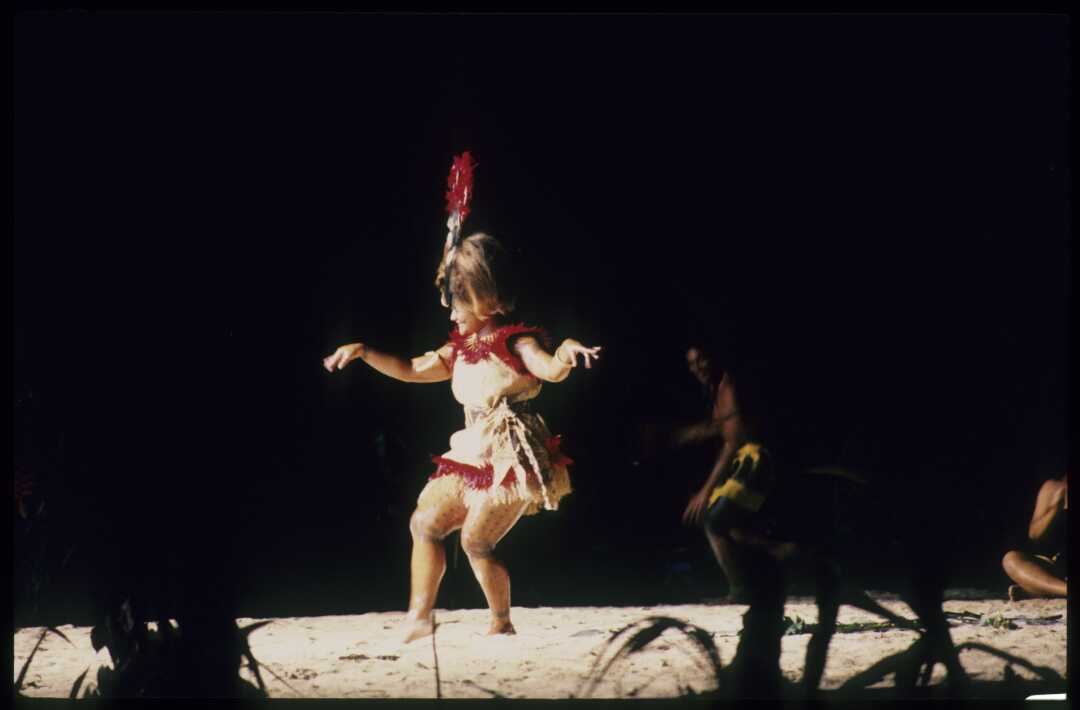Stories written in Tatau - Self reflection

Title: Tattooing in Samoa. Reference: P2003-044-042b. Created by Andrew. Source: Hocken Collections, Uare Taoka o Hākena, University of Otago (1890 -c.1895).
This blog is a part of a series of self reflection papers written by students at Te Herenga Waka - Victoria University of Wellington. As part of the paper Digital Oceania: Writing in the Pacific students were tasked to write a Digital Taonga assignment based on a collection item from the digitalpasifik website. Written by Aysia Saolele this inspiring piece transports us on a journey of identity, discovery and connection through the authors eyes.
Embedded content: https://www.youtube.com/watch?v=USiadwfcMokI.
Simple words, in essays they write. filling pages with black ink Telling stories once told in engravings,
marked on her skin. You say to read, But nan sang stories to teach me to speak.
She wears chapters on her legs, volumes spoken on her thighs. She says to be ready,
But their words have already consumed me. This ink is not yours.
Tap followed by red where fingers hit likes, Fighting narratives painted online Concealing broken truths with beautiful lies Pride tainted in judgement. Tell me, Am I ready?
II.
Tap Tap Marked. I trace her patterns of what could be my own. Red tears weeped from scars. I feared them. You tell me, You are the makers of our stories. Nothing but a mere stroke Give them something new to write.
But she tells me I am her stories
III.
So I draw, painting pictures of narratives told by my ancestors. And I sing, the legacy is yours as much as it is mine. These words I cry
This body is not my own, and the ink that I carry will tell stories to the graves of my ancestors. And so I do not listen to your stories
Mine written in flesh and bone, In the blade of the mallet, the patterns of Tatau, In the whispers of the Siapo, in the songs of our land.
You ask me am I ready?
But she sings to me,
be brave … ai loto tele
Self reflection
I chose to focus on the mallet used for Tatau, not just as an object, but as vessels for our stories. Beyond the physical tools, I wanted to capture the essence of storytelling through pens, mallets, paint, and ink—a tradition ingrained in our culture. Our tales aren't confined to books; they're woven into our very fabric, spoken through ink and song, carrying the weight of generations.
In this piece, I reflect on my journey within the world of Tatau, embodied in the relationship between a grandmother and her granddaughter. Her grandmother awaits her receiving her Tatau, yet she grapples with conflicting emotions. Instead, she paints patterns, echoing the hopes of her elders, feeling overwhelmed by societal pressures dictating her worthiness making her question not only if she’s ready but her identity in itself. In the first assignment I spoke about Tatau as an integral component of Pacific culture, firmly ingrained in our ancestry and identity. In this poem, I wanted to convey the perspective of our youth. A common issue is the idea that modern societal norms and external voices overshadow our traditional practices, causing inner turmoil and self-doubt among young people.

Taupou from American Samoa revealing tattooing at the 6th Festival of Pacific Arts, Rarotonga, Cook Islands. Brooke-White, Julia Stace, 1942-: Photographs. Ref: PA12-7230-20. Alexander Turnbull Library, Wellington, New Zealand. /records/32050631
One vivid memory stands out: seeing a pe'a tattoo on a non-Samoan, an uncle of mine. It stirred a mix of emotions. His father through marriage was a Samoan man, my godfather. I questioned his intentions and whether that made him “worthy” of receiving. Yet, in conversation, I learned that his tattoo was a tribute to his father, a way to honour his legacy through markings and telling the stories of our family and ancestors. I realised that perhaps the resentment I felt wasn’t out of anger but of jealousy. This longing that I had for feeling comfort and pride in my own identity was sheltered by the new societal norms. Though I lack those same markings, I have found comfort and pride in my own craft. Through art and design, akin to painting siapo, I tell stories. This poem serves as a heartfelt reflection of my journey, weaving tradition and personal growth into every stroke of ink and paint. This poem serves as a heartfelt reflection of my journey, weaving tradition and personal growth into every stroke of ink and paint. It is a testament to the resilience of our culture and the various ways we find to keep our stories alive. Whether through Tatau or art, our narratives endure, connecting us to our past and guiding us towards our future. In the end, this piece is not just about the tools or the art they create. It is about the people, the relationships, and the shared history that these tools help to preserve and express. It is a reflection of my thoughts, my experiences, and my connection to my heritage. Through this poem, I hope to convey the beauty and complexity of our cultural identity, and how we continue to honor and celebrate it.
This poem is a reflection of my thoughts.
The information on this site has been gathered from our content partners.
The names, terms, and labels that we present on the site may contain images or voices of deceased persons and may also reflect the bias, norms, and perspective of the period of time in which they were created. We accept that these may not be appropriate today.
If you have any concerns or questions about an item, please contact us.